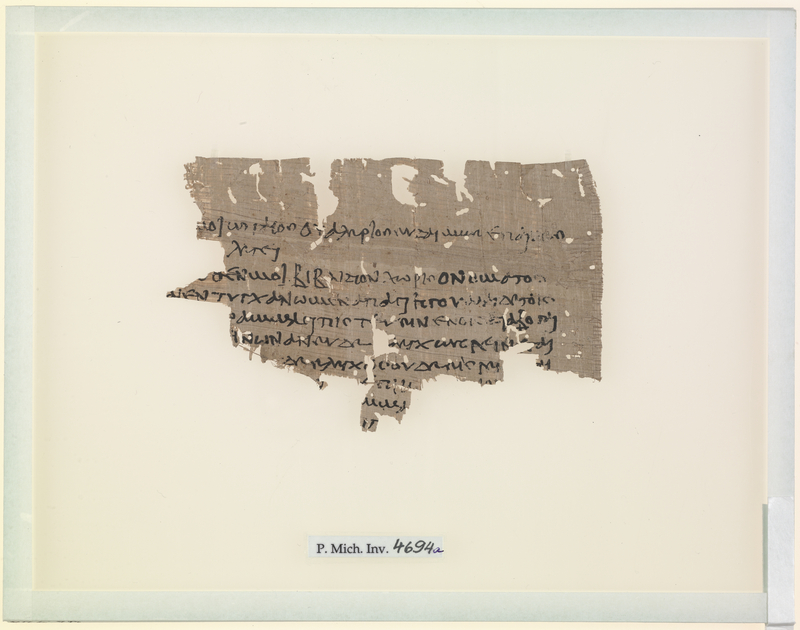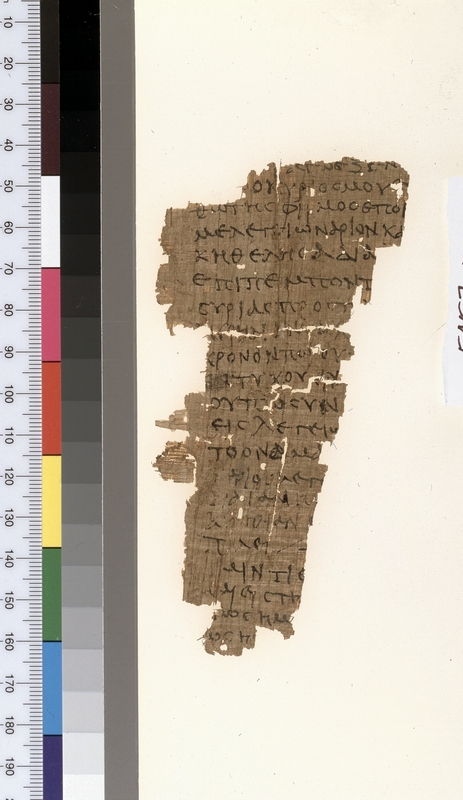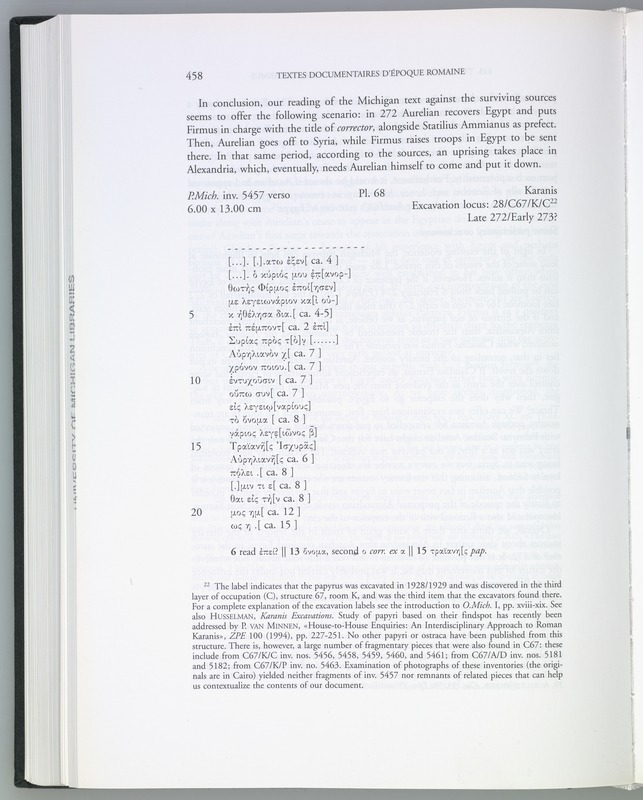How do papyrologists communicate their findings?
After transcribing the papyrus, the papyrologist prepares the text for publication. A traditional papyrus publication (“edition”) contains a description of the physical characteristics of the papyrus, an introduction to the importance of the particular document, a transcription of the text, a translation into a modern language, and some explanatory notes on individual words or passages.
Original Papyrus
This papyrus contains a letter, of which the beginning has not survived. The unidentified sender writes he has just been appointed as a legionary, but is experiencing some difficulties with the appointment. Because the letter was found in Karanis, Egypt, it is likely that the addressee was an inhabitant of that town. The sender was probably stationed near Alexandria.

What do papyrologists do?

Are papyrologists ever done with a papyrus text?


